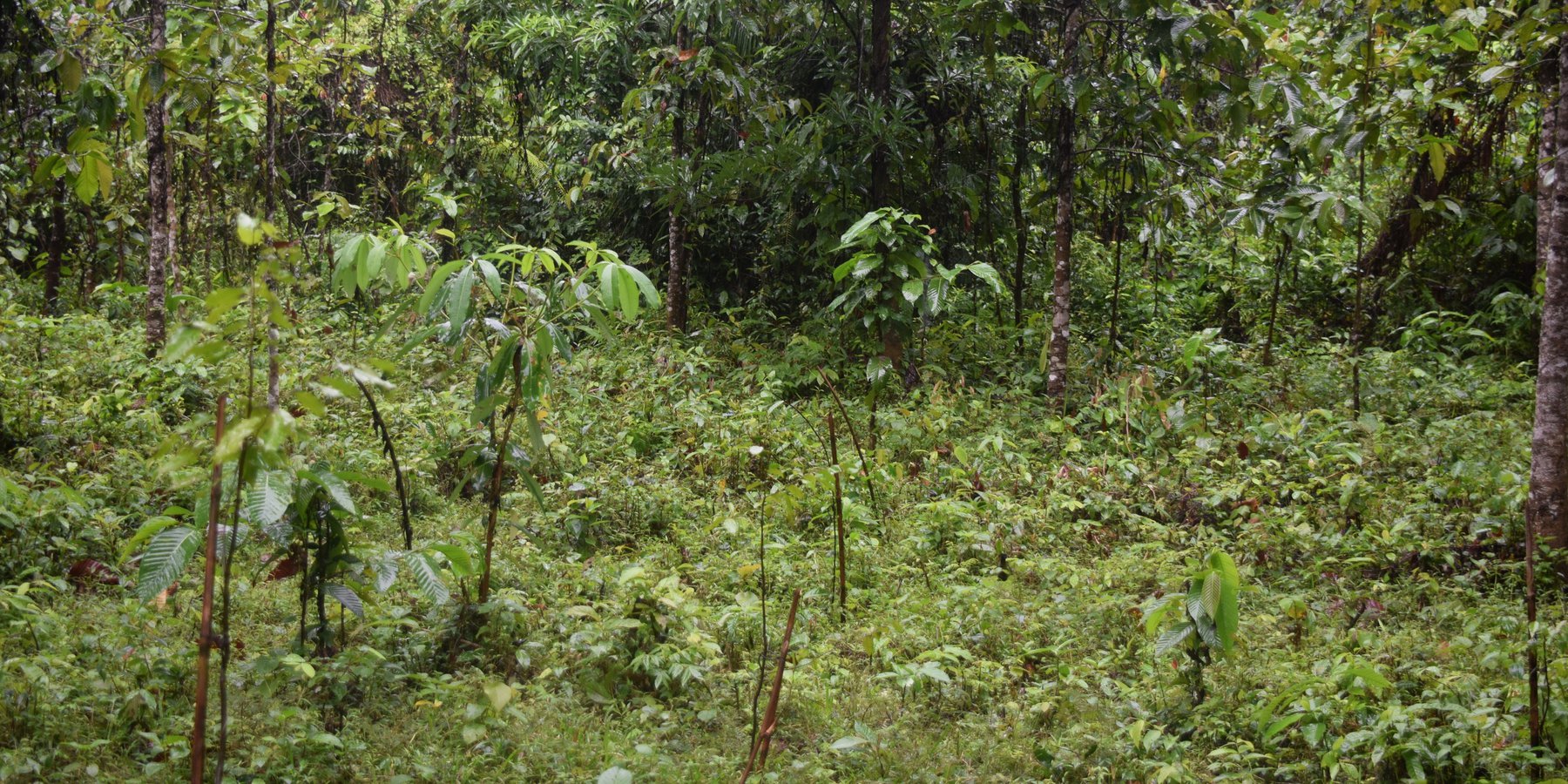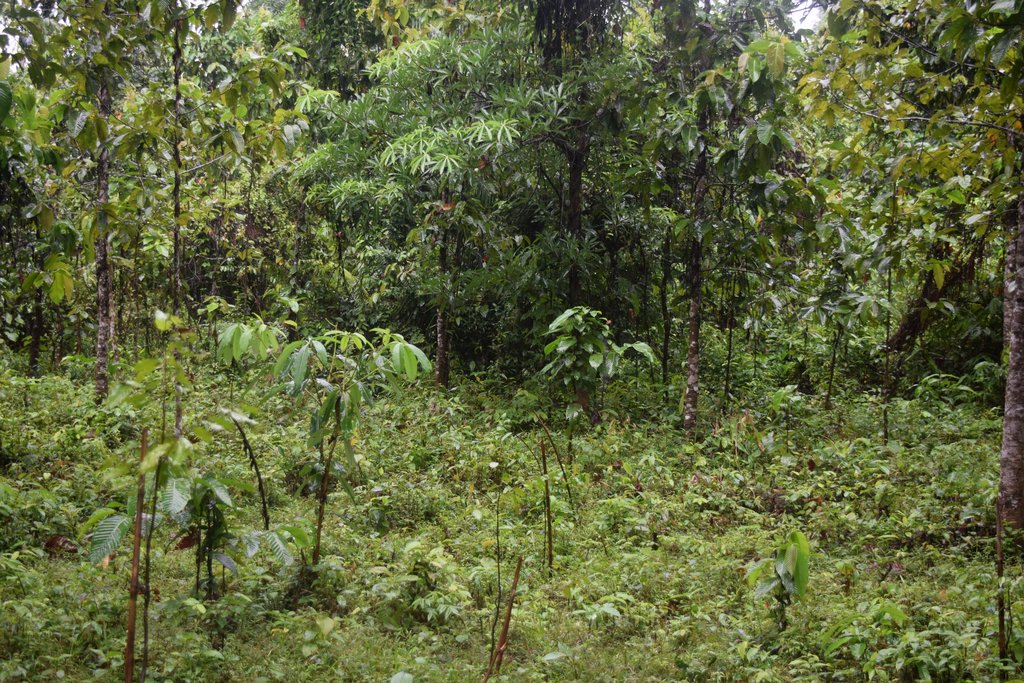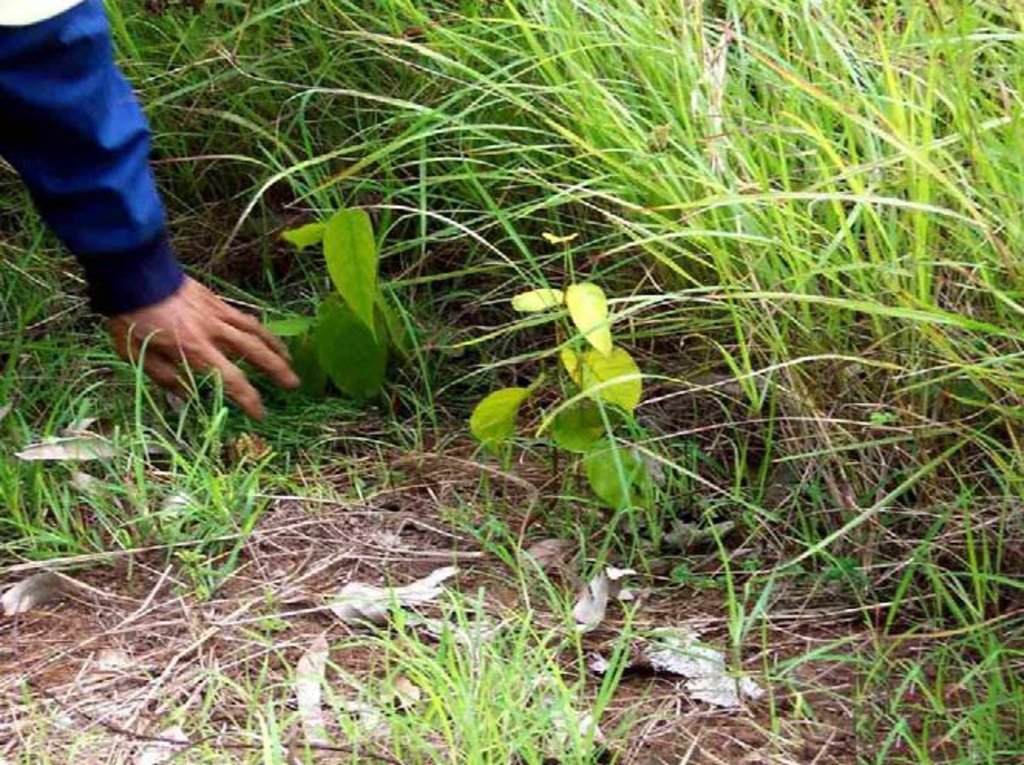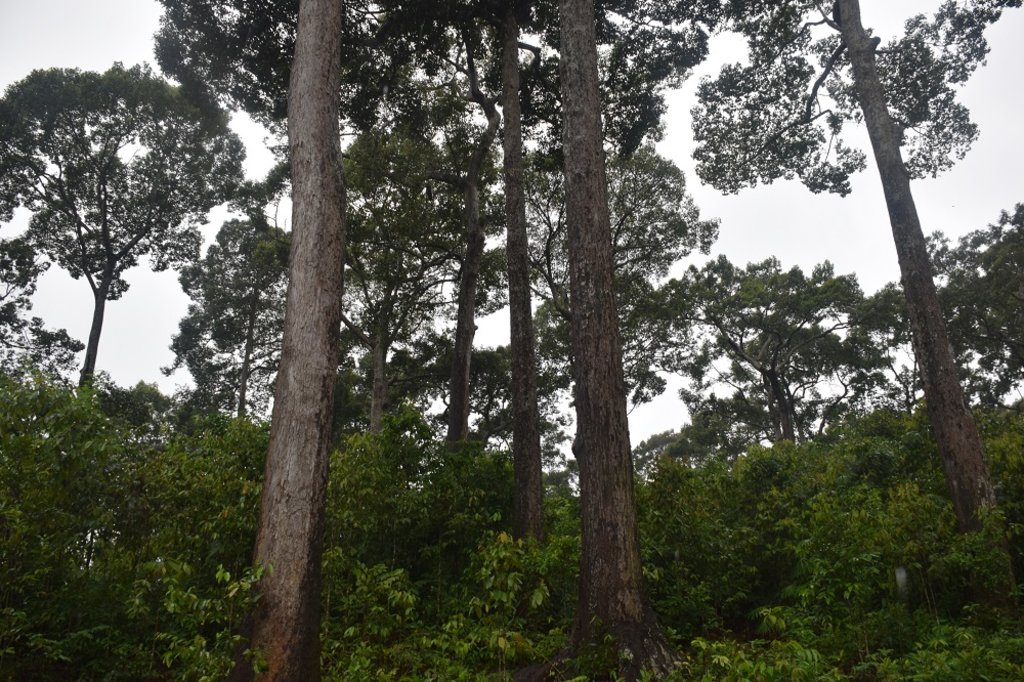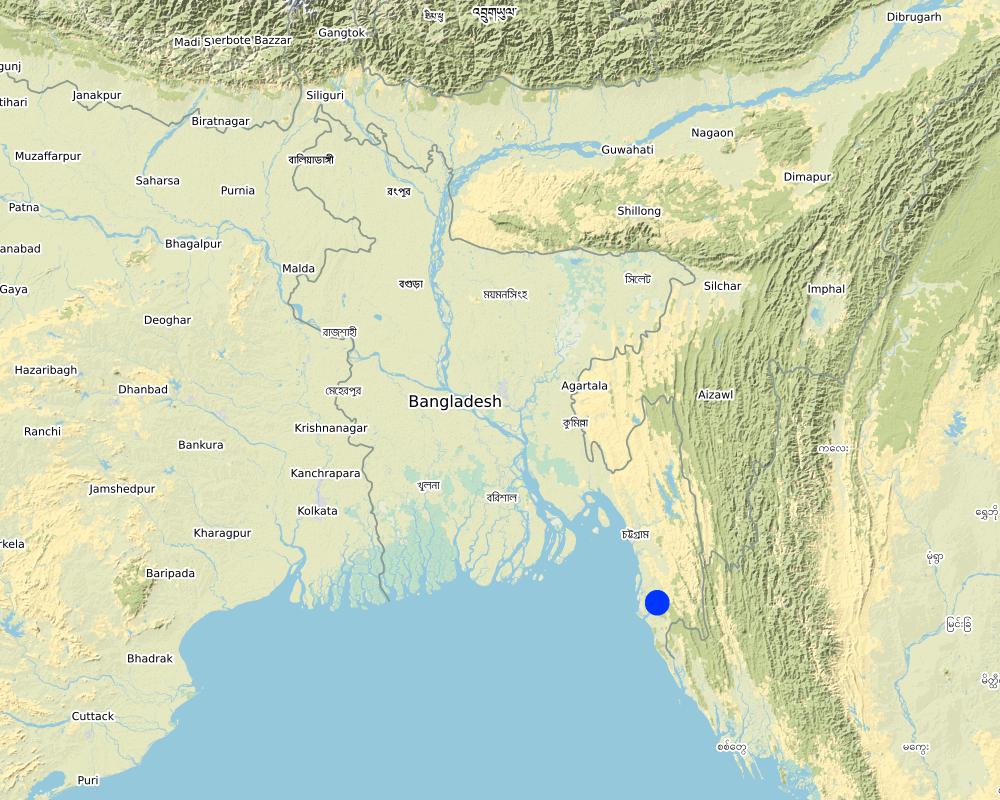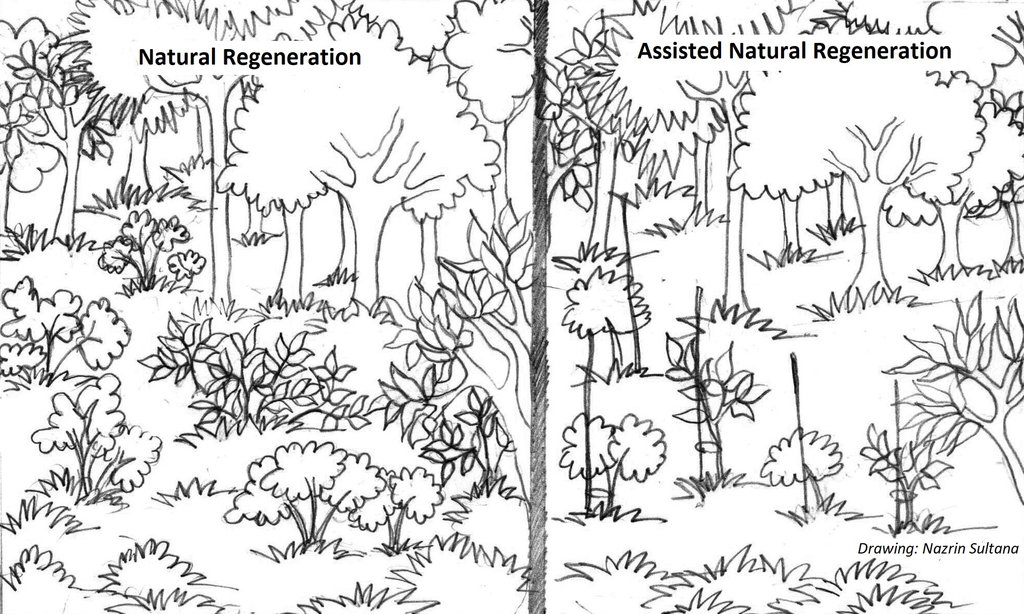Assisted Natural Regeneration [孟加拉国]
- 创建:
- 更新:
- 编制者: Fazlay Arafat
- 编辑者: –
- 审查者: Nicole Harari, Rima Mekdaschi Studer, Ursula Gaemperli
ANR
technologies_4372 - 孟加拉国
查看章节
全部展开 全部收起1. 一般信息
1.2 参与该技术评估和文件编制的资源人员和机构的联系方式
关键资源人
土地使用者:
Morshed Hoq Mahabub
Bangladesh Forest Department
孟加拉国
土地使用者:
Islam Md. Saiful
Bangladesh Forest Department
孟加拉国
土地使用者:
Rahman Md.
Community Patrolling Group (CPG), Medhakocchopia
孟加拉国
有助于对技术进行记录/评估的项目名称(如相关)
Decision Support for Mainstreaming and Scaling out Sustainable Land Management (GEF-FAO / DS-SLM)有助于对技术进行记录/评估的机构名称(如相关)
Bangladesh Forest Department (Bangladesh Forest Department) - 孟加拉国有助于对技术进行记录/评估的机构名称(如相关)
FAO Bangladesh (FAO Bangladesh) - 孟加拉国1.3 关于使用通过WOCAT记录的数据的条件
编制者和关键资源人员接受有关使用通过WOCAT记录数据的条件。:
是
1.4 所述技术的可持续性声明
这里所描述的技术在土地退化方面是否存在问题,导致无法被认为是一种可持续的土地管理技术?:
否
2. SLM技术的说明
2.1 技术简介
技术定义:
Assisted natural regeneration (ANR) is a simple, low-cost forest restoration method that can effectively convert deforested lands to more productive forests.
2.2 技术的详细说明
说明:
Medhakachapia National Park (MKNP) is nationally known for protecting the most extensive stands of mature critically endangered Garjan (Dipterocarpus turbinatus) trees in Bangladesh. Other native trees present in MKNP include Telsur Hopea odorata, Boilam Anisoptera scaphula, Gamar Gmelina arborea and Chapalish Artocarpus chaplasha. MKNP is tropical semi-evergreen forest in the low hills of the Fulchari Forest Range and covers 396 hectares. The park is located in Chakaria Upazila, not far from Cox’s Bazar in the southeast part of the country. Originally, the entire park area was densely covered with Garjan forest, but now there are about 9000 mature Garjan trees as many parts have been encroached upon with agriculture. MKNP is bordered by 13 villages where most of the people depend directly or indirectly upon the forest. Encroachment by settlements and agriculture has been associated with illegal tree cutting, hunting, and collection of fuel wood, bamboo and cane and other forest products. These activities are encouraged by sawmills in the vicinity and unemployment. Due to reduced canopy coverage, the forest soils have been exposed degraded. In order to restore forest health, the Bangladesh Forest Department introduced Assisted Natural Regeneration (ANR) practice. The access for public recreation and education and research is allowed inside national park. However, the collection of fuel woods and non-timber forest product from national park area by the local communities is a common scenario here.
ANR aims to accelerate, rather than replace, natural succession processes by removing or reducing barriers to natural forest regeneration such as competition with weedy species and recurring disturbances (e.g., fuel wood collection, grazing, fire and wood harvesting). Compared to conventional reforestation methods, which involve planting tree seedlings, ANR offers the significant advantage avoiding costs associated with propagating, raising, and planting seedlings. ANR is most effectively utilized at the landscape level in restoring the forest protective functions, such as soil protection, and is most suitable for restoring areas where some level of natural succession is already in progress. ANR offers distinct advantages over other forest restoration methods but also has some limitations. ANR is much cheaper to implement and can be applied over larger areas than other restoration planting approaches, but may be less effective in enhancing floristic diversity at the initial stages. Some of ANR’s disadvantages can be overcome by enrichment planting with desirable species. ANR aims to accelerate, rather than replace natural succession process by removing or reducing barriers to natural forest regeneration.
Soil degradation of MKNP has been greatly reduced through practicing ANR and co-management. In MKNP co-management was established on 2009 engaging local communities. As a part of co-management activities, the Forest Department (FD) formed a Community Patrolling Group (CPG) with 35 members from the local community to protect the Garjan trees and look after the whole forest along with forester officers. Under the support from Climate-Resilient Ecosystems and Livelihoods (CREL) project of USAID, the CPG along with FD intensively patrol the forest in rotating groups to ensure that no harm is done to the mature trees and natural seedlings. As a result, sufficient tree regeneration is now taking place and their growth is accelerating. Even where weeds dominate, seedlings of pioneer tree species are often found. The minimum required number of preexisting seedlings to implement ANR depends on the acceptable length of time for the forest to be restored and site-specific conditions that influence the rate of forest recovery. As a general reference, a density range of 200–800 seedlings/ha (>15 cm in height; counting clumps in 1 m2 as one seedling) has been suggested for ANR reforestation, and it has been estimated that at least 700 seedlings/ha are needed during the early treatment period in order to achieve canopy closure within three years. Although the forest restored through ANR in MKNP will have lower commercial value in terms of timber, it will support greater biodiversity and more effectively provide for the subsistence needs of the local people compared to commercial plantations.
2.3 技术照片
2.5 已应用该技术的、本评估所涵盖的国家/地区/地点
国家:
孟加拉国
区域/州/省:
Chittagong division
有关地点的进一步说明:
Medakacchapia National Park under Cox's Bazar North Forest division
具体说明该技术的分布:
- 均匀地分布在一个区域
如果不知道精确的区域,请注明大致覆盖的区域:
- 1-10 平方千米
技术现场是否位于永久保护区?:
是
如果是,请具体说明:
Medakacchapia is a National Park with an area of 395.92 ha. In Bangladesh, the access for public recreation and education/research is allowed inside national park. However, the collection of fuel woods and non-timber forest product from national park area by the local communities is a common scenario here.
Map
×2.6 实施日期
注明实施年份:
2014
2.7 技术介绍
详细说明该技术是如何引入的:
- 通过项目/外部干预
注释(项目类型等):
Climate-Resilient Ecosystems and Livelihoods (CREL) project of USAID
3. SLM技术的分类
3.1 该技术的主要目的
- 减少、预防、恢复土地退化
- 保护生态系统
- 保持/提高生物多样性
- 创造有益的社会影响
3.2 应用该技术的当前土地利用类型
同一土地单元内混合使用的土地::
否

森林/林地
- (半天然)天然森林/林地
(半天然)天然森林/林地:具体说明管理类型:
- 清除枯木/剪枝
- Tropical semi-evergreen forest
- Dipterocarpus turbinatus, Syzygium grande, Chukrasia tabularis, Hopea odorata
以上的树木是落叶树还是常绿树?:
- 混合落叶或常绿
产品和服务:
- 木材
- 薪材
- 水果和坚果
- 自然保持/保护
- 娱乐/旅游
- Oil from Dipterocarpus turbinatus
3.3 由于技术的实施,土地使用是否发生了变化?
由于技术的实施,土地使用是否发生了变化?:
- 否(继续问题3.4)
3.4 供水
该技术所应用土地的供水:
- 雨养
3.5 该技术所属的SLM组
- 天然和半天然森林管理
- 改良的地面/植被覆盖
3.6 包含该技术的可持续土地管理措施

植物措施
- V1:乔木和灌木覆盖层

管理措施
- M2:改变管理/强度级别
注释:
Earlier the ground vegetation was suppressed by weeds and non-valuable plant species. Various alien invasive plant species also disturbed the natural succession process of these area. The management practice also changed from plantation in vacant area to assisted natural regeneration with the involvement of local community.
3.7 该技术强调的主要土地退化类型

土壤水蚀
- Wt:表土流失/地表侵蚀
- Wg:冲沟侵蚀/沟蚀

生物性退化
- Bc:植被覆盖的减少
- Bq:数量/生物量减少
- Bs:质量和物种组成/多样性的下降
3.8 防止、减少或恢复土地退化
具体数量名该技术与土地退化有关的目标:
- 减少土地退化
注释:
Canopy coverage of the area were poor and top soil erosion occurred due to exposed forest cover. Through ANR the canopy coverage will be regained and reduce land degradation.
4. 技术规范、实施活动、投入和成本
4.1 该技术的技术图纸
技术规范(与技术图纸相关):
Step 1: Marking of Woody Regeneration
Once the target area is identified and its boundaries are demarcated, the site is surveyed to assess its succession status and to locate any natural woody regeneration growing in the weedy vegetation. The located seedlings should be clearly marked with stakes. Decision on the minimum size of seedlings to be protected and released depends on the density and distribution of seedlings in the area, as well as budget and time constraints. However, the seedlings should be large enough to have a reasonable chance of survival.
Step 2: Liberation and Tending of Woody Regeneration
The next step is to accelerate the growth of the marked seedlings by reducing competition from the weedy species for water, nutrients, and light. The initial weeding and climber cutting should be implemented at the onset of the rainy season so that the liberated seedlings will have the full growing season of accelerated growth. All competing vegetation such as weeds and climbers within at least 0.5 m radius around the stem of the marked seedlings are removed. In some cases, clumps of woody seedlings may need to be thinned in order to liberate the largest individuals or the more desirable species.
Step 3: Protection from Disturbance.
Protecting against fire and other forms of disturbance is the most important ANR activity. Establishing firebreaks around blocks of ANR-treated sites is important, if the area is prone to fire. If animal grazing is prevalent in the area, fencing should be established, or patrols/guards should be assigned to protect the site from such activity. Long-term community involvement and support is critical in preventing the re-occurrence of disturbance events that will set back succession to the before-treatment state.
Step 4: Maintenance and Enrichment Planting.
It is suggested that the maintenance of weeding, and liberation of any additional seedlings that establish or that are newly found, should be conducted three times in first two years and two times in next two years. In the fifth year one climber cutting should be conducted in rainy season. The frequency of maintenance operations can be adjusted according to field observation and monitoring data on the growth of the liberated seedlings and the density of natural woody regeneration. Enrichment planting can also be carried out to accelerate canopy closure, add useful tree species, and increase floral diversity. Even after the restoration of canopy cover, large-seeded primary forest trees and rare species are unlikely to colonize naturally. If restoring some of the floral diversity of the original forest is one of the restoration objectives, species or functional groups of trees lacking in natural regeneration will need to be planted either at the initial treatment stage or after canopy closure depending on the ecological requirements of the species.
作者:
Nazrin Sultana
日期:
16/04/2019
4.2 有关投入和成本计算的一般信息
具体说明成本和投入是如何计算的:
- 每个技术区域
注明尺寸和面积单位:
1 hectare
如果使用本地面积单位,注明转换系数为1公顷(例如1公顷=2.47英亩):1公顷=:
1 ha = 2.47 acres
其它/国家货币(具体说明):
BDT
如相关,注明美元与当地货币的汇率(例如1美元=79.9巴西雷亚尔):1美元=:
84.0
注明雇用劳工的每日平均工资成本:
500 BDT
4.3 技术建立活动
| 活动 | 时间(季度) | |
|---|---|---|
| 1. | Site preparation (Boundary demarcation, site map preparation with GPS, marking of woody regeneration) | May-June |
| 2. | Care and maintenance of natural regeneration (liberation and tending of woody regeneration, protection from disturbance) | June-July |
4.4 技术建立所需要的费用和投入
| 对投入进行具体说明 | 单位 | 数量 | 单位成本 | 每项投入的总成本 | 土地使用者承担的成本% | |
|---|---|---|---|---|---|---|
| 劳动力 | Survey for map preparation and marking of woody regeneration | person-days | 1.0 | 500.0 | 500.0 | |
| 劳动力 | Tying up seedlings and young trees | person-days | 4.0 | 500.0 | 2000.0 | |
| 劳动力 | Tending of woody regeneration | person-days | 10.0 | 500.0 | 5000.0 | |
| 劳动力 | Application of fertilizers | person-days | 4.0 | 500.0 | 2000.0 | |
| 设备 | Weeding equipment (manual weeding tool) | lump sum | 1.0 | 1000.0 | 1000.0 | |
| 设备 | Bamboo sticks for tying up seedlings | pieces | 800.0 | 2.0 | 1600.0 | |
| 设备 | Rope | lump sum | 1.0 | 1000.0 | 1000.0 | |
| 肥料和杀菌剂 | Compost fertilizer | Kg | 625.0 | 4.0 | 2500.0 | |
| 施工材料 | Rod, Cement, Sand, Khoa, etc for RCC signboard | Lump sum | 1.0 | 1000.0 | 1000.0 | |
| 技术建立所需总成本 | 16600.0 | |||||
| 技术建立总成本,美元 | 197.62 | |||||
如果土地使用者负担的费用少于100%,请注明由谁负担其余费用:
Bangladesh forest department is the land user and the total cost of the establishment borne by CREL project
4.5 维护/经常性活动
| 活动 | 时间/频率 | |
|---|---|---|
| 1. | 1st year weeding | 3 times |
| 2. | 2nd year weeding | 3 times |
| 3. | 3rd year weeding | 2 times |
| 4. | 4th year weeding | 2 times |
| 5. | 5th year climber cutting | 1 time |
4.6 维护/经常性活动所需要的费用和投入(每年)
| 对投入进行具体说明 | 单位 | 数量 | 单位成本 | 每项投入的总成本 | 土地使用者承担的成本% | |
|---|---|---|---|---|---|---|
| 劳动力 | 1st year weeding | person-days | 15.0 | 500.0 | 7500.0 | |
| 劳动力 | 2nd year weeding | person-days | 15.0 | 500.0 | 7500.0 | |
| 劳动力 | 3rd year weeding | person-days | 10.0 | 500.0 | 5000.0 | |
| 劳动力 | 4th year weeding and 5th year climber cutting | person-days | 15.0 | 500.0 | 7500.0 | 100.0 |
| 设备 | Weeding equipment (manual weeding tools) | lump sum | 1.0 | 1000.0 | 1000.0 | |
| 技术维护所需总成本 | 28500.0 | |||||
| 技术维护总成本,美元 | 339.29 | |||||
如果土地使用者负担的费用少于100%,请注明由谁负担其余费用:
The 4th year weeding and 5th year climber cutting borne by forest department
4.7 影响成本的最重要因素
描述影响成本的最决定性因素:
The most important factor affecting the costs is labor
5. 自然和人文环境
5.1 气候
年降雨量
- < 250毫米
- 251-500毫米
- 501-750毫米
- 751-1,000毫米
- 1,001-1,500毫米
- 1,501-2,000毫米
- 2,001-3,000毫米
- 3,001-4,000毫米
- > 4,000毫米
指定年平均降雨量(若已知),单位为mm:
3770.00
有关降雨的规范/注释:
The driest month is December. The greatest amount of precipitation occurs in June.
农业气候带
- 潮湿的
Mean annual temperature is 25.6 °C
5.2 地形
平均坡度:
- 水平(0-2%)
- 缓降(3-5%)
- 平缓(6-10%)
- 滚坡(11-15%)
- 崎岖(16-30%)
- 陡峭(31-60%)
- 非常陡峭(>60%)
地形:
- 高原/平原
- 山脊
- 山坡
- 山地斜坡
- 麓坡
- 谷底
垂直分布带:
- 0-100 m a.s.l.
- 101-500 m a.s.l.
- 501-1,000 m a.s.l.
- 1,001-1,500 m a.s.l.
- 1,501-2,000 m a.s.l.
- 2,001-2,500 m a.s.l.
- 2,501-3,000 m a.s.l.
- 3,001-4,000 m a.s.l.
- > 4,000 m a.s.l.
说明该技术是否专门应用于:
- 不相关
5.3 土壤
平均土层深度:
- 非常浅(0-20厘米)
- 浅(21-50厘米)
- 中等深度(51-80厘米)
- 深(81-120厘米)
- 非常深(> 120厘米)
土壤质地(表土):
- 中粒(壤土、粉土)
土壤质地(地表以下> 20厘米):
- 中粒(壤土、粉土)
表土有机质:
- 中(1-3%)
5.4 水资源可用性和质量
地下水位表:
5-50米
地表水的可用性:
好
水质(未处理):
不良饮用水(需要处理)
水质请参考::
地表水
水的盐度有问题吗?:
否
该区域正在发生洪水吗?:
否
5.5 生物多样性
物种多样性:
- 中等
栖息地多样性:
- 中等
5.6 应用该技术的土地使用者的特征
定栖或游牧:
- 定栖的
生产系统的市场定位:
- 混合(生计/商业)
非农收入:
- 低于全部收入的10%
相对财富水平:
- 贫瘠
个人或集体:
- 员工(公司、政府)
机械化水平:
- 手工作业
性别:
- 女人
- 男人
土地使用者的年龄:
- 青年人
- 中年人
- 老年人
5.7 应用该技术的土地使用者使用的平均土地面积
- < 0.5 公顷
- 0.5-1 公顷
- 1-2 公顷
- 2-5公顷
- 5-15公顷
- 15-50公顷
- 50-100公顷
- 100-500公顷
- 500-1,000公顷
- 1,000-10,000公顷
- > 10,000公顷
这被认为是小规模、中规模还是大规模的(参照当地实际情况)?:
- 小规模的
5.8 土地所有权、土地使用权和水使用权
土地所有权:
- 州
土地使用权:
- 社区(有组织)
用水权:
- 自由进入(无组织)
土地使用权是否基于传统的法律制度?:
否
具体说明:
Under co-management system
注释:
Co-management of forest ensures active participation of all concerned parties in the management or maintenance of natural resources on the basis of consensus among the stakeholders involved in the management of the natural resources of an area
5.9 进入服务和基础设施的通道
健康:
- 贫瘠
- 适度的
- 好
教育:
- 贫瘠
- 适度的
- 好
技术援助:
- 贫瘠
- 适度的
- 好
就业(例如非农):
- 贫瘠
- 适度的
- 好
市场:
- 贫瘠
- 适度的
- 好
能源:
- 贫瘠
- 适度的
- 好
道路和交通:
- 贫瘠
- 适度的
- 好
饮用水和卫生设施:
- 贫瘠
- 适度的
- 好
金融服务:
- 贫瘠
- 适度的
- 好
6. 影响和结论性说明
6.1 该技术的现场影响
社会经济效应
生产
木材生产
注释/具体说明:
ANR support the growth of woody vegetation and regular monitoring of ANR also provide security to the mature trees of the stand
森林/林地质量
非木材林业生产
生产故障风险
生产区域
注释/具体说明:
Through ANR the fellow and degraded forest land now bring under productive forest
土地管理
注释/具体说明:
ANR is a comparatively easy method than clear felling with artificial regeneration, mixed plantation or enrichment plantation to manage forest area
收入和成本
收入来源的多样性
注释/具体说明:
The local communities can collect NTFP from the ANR site. Due to the increase of vegetation and presence of wildlife in MKNP, the area also attract tourists. The CPG people also worked as tourist guide
社会文化影响
文化机会
注释/具体说明:
aesthetic beauty of forest improved
娱乐机会
注释/具体说明:
eco-tourism increased
SLM/土地退化知识
社会经济弱势群体的情况
注释/具体说明:
Poor people working in Community Patrolling Group (CPG) taking care of ANR with forest department. Social status of these poor people improved.
生态影响
水循环/径流
地表径流
地下水位/含水层
蒸发
注释/具体说明:
Due to increased canopy coverage evaporation decreased
土壤
土壤水分
土壤覆盖层
土壤流失
养分循环/补给
土壤有机物/地下C
生物多样性:植被、动物
植被覆盖
生物量/地上C
植物多样性
外来入侵物种
注释/具体说明:
Through ANR only native plant species promoted to grow here
动物多样性
注释/具体说明:
Animal diversity increased as the habitat improved
有益物种
栖息地多样性
注释/具体说明:
habitat diversity increased with the canopy coverage and tree density improvement
减少气候和灾害风险
滑坡/泥石流
碳和温室气体的排放
6.2 该技术的场外影响已经显现
旱季稳定可靠的水流
注释/具体说明:
Due to the presence of vegetation on slope the stream flow become stable
下游淤积
温室气体的影响
6.3 技术对渐变气候以及与气候相关的极端情况/灾害的暴露和敏感性(土地使用者认为的极端情况/灾害)
渐变气候
渐变气候
| 季节 | 增加或减少 | 该技术是如何应对的? | |
|---|---|---|---|
| 年温度 | 增加 | 好 | |
| 季节性温度 | 夏季 | 增加 | 好 |
| 年降雨量 | 减少 | 适度 | |
| 季雨量 | 湿季/雨季 | 增加 | 适度 |
气候有关的极端情况(灾害)
水文灾害
| 该技术是如何应对的? | |
|---|---|
| 滑坡 | 不好 |
注释:
Note to coping with landslides; Due to the events of landslides in the upper slope sometimes the seedlings and young trees suffered at the foot slope. The degraded upland area can be recovered through ANR with enrichment planting to reduces the events of landslides and slope stabilization.
6.4 成本效益分析
技术收益与技术建立成本相比如何(从土地使用者的角度看)?
短期回报:
轻度消极
长期回报:
非常积极
技术收益与技术维护成本/经常性成本相比如何(从土地使用者的角度看)?
短期回报:
轻度消极
长期回报:
非常积极
6.5 技术采用
- 1-10%
在所有采用这项技术的人当中,有多少人是自发的,即未获得任何物质奖励/付款?:
- 91-100%
6.6 适应
最近是否对该技术进行了修改以适应不断变化的条件?:
否
6.7 该技术的优点/长处/机会
| 土地使用者眼中的长处/优势/机会 |
|---|
| It is a low cost intervention to regain the protective roles of the forest. |
| Community Patrolling Group (CPG) are involved in maintenance of ANR forest through co-management of natural resources. Regular patrolling activity reduces the disturbance in forest and help to prevent land degradation. |
| 编制者或其他关键资源人员认为的长处/优势/机会 |
|---|
| Biodiversity conservation and wildlife habitat restoration are accelerated through ANR. |
6.8 技术的弱点/缺点/风险及其克服方法
| 土地使用者认为的弱点/缺点/风险 | 如何克服它们? |
|---|---|
| ANR is less effective in enhancing floral diversity than techniques e.g. mixed plantation, enrichment plantation, selection cum improvement etc. It promotes the existing regeneration and significant portion of regeneration comes from the dominant trees of the stand. | Enrichment plantations with ANR can increase the floral diversity. |
| The forest restored through ANR may have less commercial value in terms of timber compared to commercial plantation. This weakness of ANR is only valid for the forest which is managed for production purpose. | Desirable timber species can be planted as enrichment with ANR. |
| 编制者或其他关键资源人员认为的弱点/缺点/风险 | 如何克服它们? |
|---|---|
| ANR is suitable for areas where some level of natural succession is in progress. This, because sufficient tree regeneration must be present on the targeted site so their growth can be accelerate through ANR. | Plantation activity with other restoration method should be practiced where natural succession is low or absent. |
7. 参考和链接
7.1 信息的方法/来源
- 实地考察、实地调查
number of informants: 04
- 与土地使用者的访谈
number of informants: 03
- 与SLM专业人员/专家的访谈
number of informants: 02
- 根据报告和其他现有文档进行编译
number of informants: 02
(现场)数据是什么时候汇编的?:
15/01/2019
7.2 参考可用出版物
标题、作者、年份、ISBN:
Shono, K., E. A. Cadaweng & P. B. Durst (2007) Application of assisted natural regeneration to restore degraded tropical forestlands. Restoration Ecology, 15, 620-626.
可以从哪里获得?成本如何?
http://www.fao.org/forestry/19102-0bf30dd3d800687636a5ddc85e409044a.pdf
7.3 链接到网络上的相关信息
标题/说明:
Medhakachapia National Park
URL:
http://nishorgo.org/project/medhakachapia-national-park/
7.4 一般注释
The WOCAT questionnaire covers all the technical aspects of this SLM practice
链接和模块
全部展开 全部收起链接
无链接
模块
无模块


